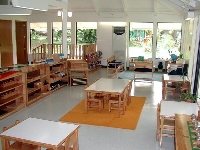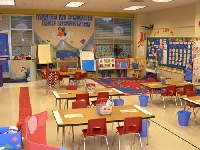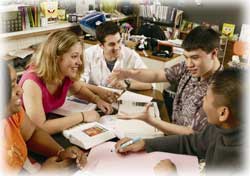It’s been a couple of weeks since I’ve posted anything. It’s certainly not because of a lack of ideas/concepts/thoughts, it’s been more due to the fact that holidays are done and I’m back into the groove of school. I wondered when I started this blog whether or not I’d be able to maintain it once “reality” kicked in. Did I need the sound of the lake and the sunshine in order to inspire me to write? Does setting play a role in one’s ability to be creative?
I love my job and spending time with colleagues who embrace the core belief in wanting to do what is best for our students. It’s been very rewarding seeing our staff come into the school to prepare their rooms for their incoming students. The environment plays such an important factor in setting the tone and culture in a classroom as well as in a school. Brightly painted bulletin boards, Welcome signs, organized learning centres and labelled bins all signify to the students that this is a place where you are wanted and this is a purposeful place of learning.
in setting the tone and culture in a classroom as well as in a school. Brightly painted bulletin boards, Welcome signs, organized learning centres and labelled bins all signify to the students that this is a place where you are wanted and this is a purposeful place of learning.
As a school system, we have been moving in the direction of Bump It Up Walls or as I like to call them, Feedback Forums ~ a display within the classroom where students can see their work, but they can also see examples of how to improve their work.  Those types of displays set a powerful tone in a learning environment. When I walk into a classroom, I’m cognizant of the layout of the student desks and student work areas. Are students provided with the opportunity to work in pairs/groups or are they expected to work in isolation? Are there designated areas in the room for guided reading and guided writing groups? Is the technology accessible to the students or is it used solely as a presentation tool by the teacher?
Those types of displays set a powerful tone in a learning environment. When I walk into a classroom, I’m cognizant of the layout of the student desks and student work areas. Are students provided with the opportunity to work in pairs/groups or are they expected to work in isolation? Are there designated areas in the room for guided reading and guided writing groups? Is the technology accessible to the students or is it used solely as a presentation tool by the teacher?
In a discussion with a colleague this week, she shared that when she visits schools, her focus when she walks into a classroom is to monitor who is speaking. Is the teacher doing all of the talking or are students engaged in meaningful discussions? Powerful dialogue can lead to the generation of wonderful ideas for writing. The best way to learn about something and to solidify your thinking is to be able to talk to someone else about it. Are you giving your students lots of time for purposeful discussion?
schools, her focus when she walks into a classroom is to monitor who is speaking. Is the teacher doing all of the talking or are students engaged in meaningful discussions? Powerful dialogue can lead to the generation of wonderful ideas for writing. The best way to learn about something and to solidify your thinking is to be able to talk to someone else about it. Are you giving your students lots of time for purposeful discussion?
So my question for today is…..
What does your classroom say about the quality of learning that will be taking place in it? It is an environment which will allow creativity to flow? It is a place where children will be inspired to write?
Come write with me!

